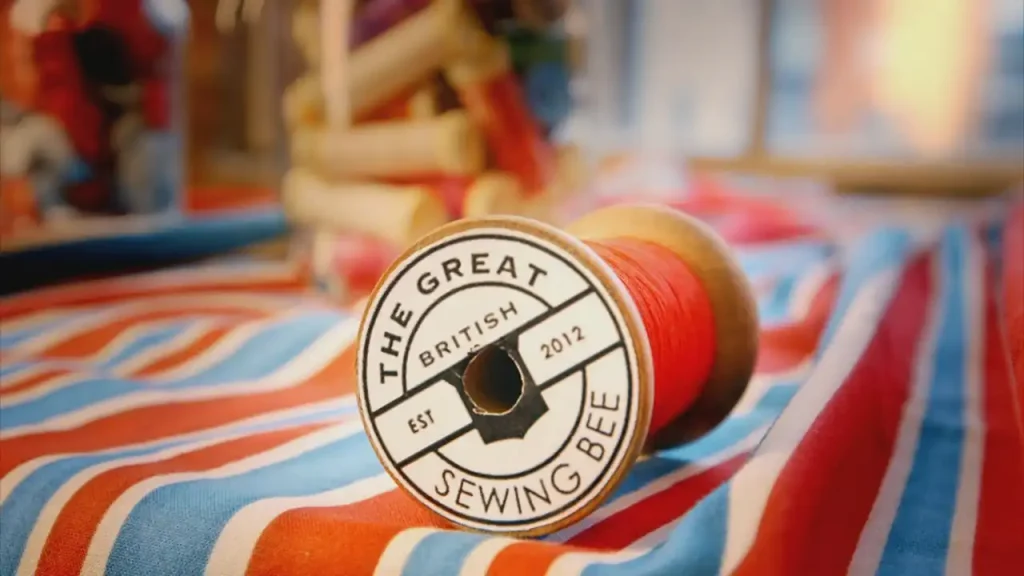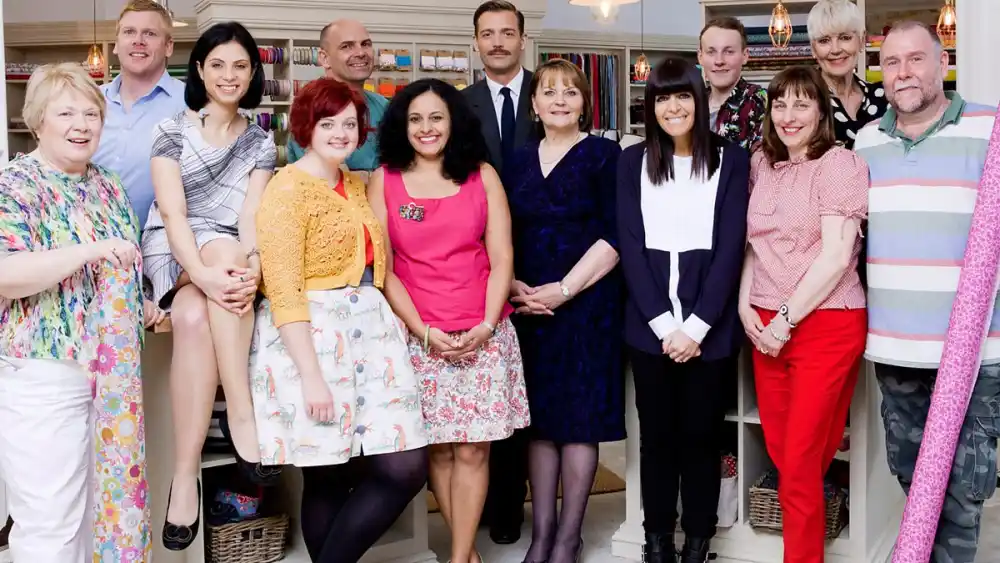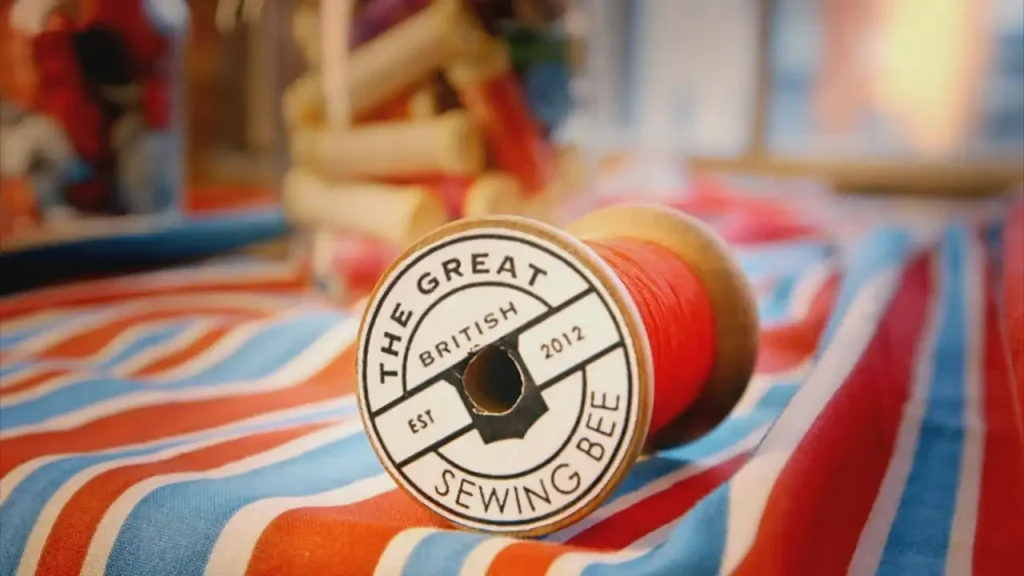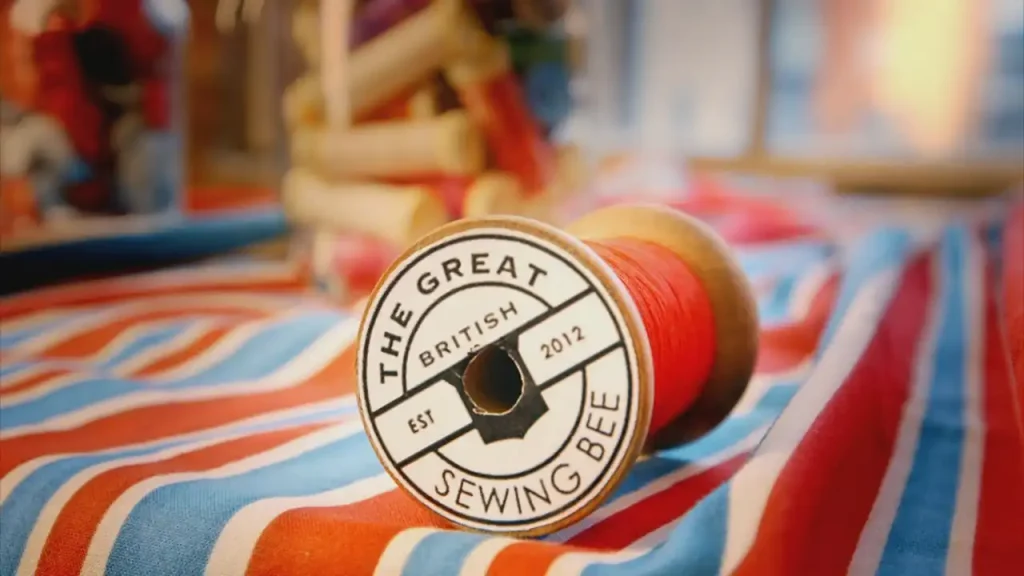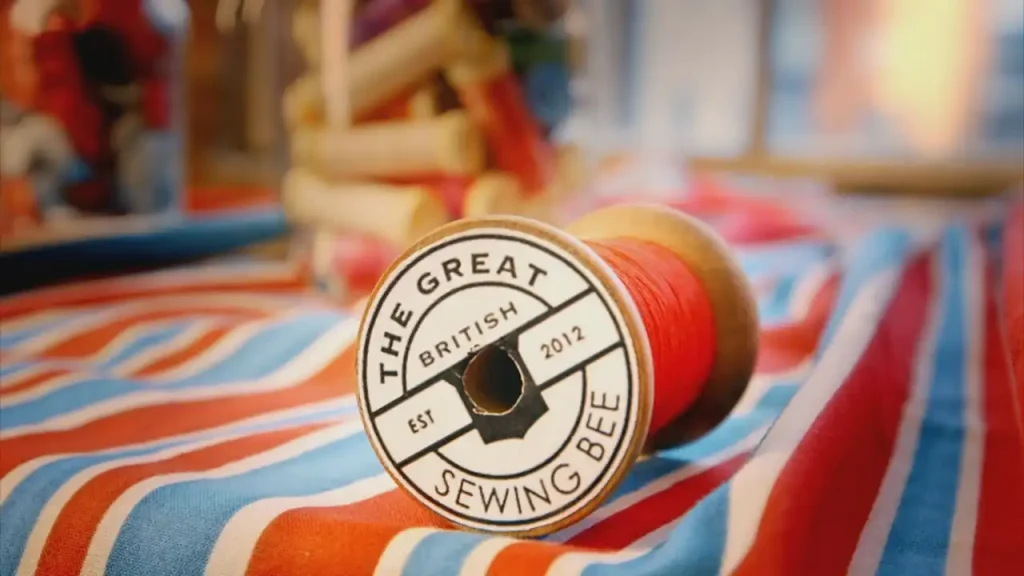The Great British Sewing Bee Season 3 Episode 3 – The acclaimed show, “The Great British Sewing Bee,” is set to enthrall audiences once more with its riveting six-part series, brilliantly hosted by the charismatic Claudia Winkleman. This season, a select group of the nation’s finest home sewers are pitted against each other, enduring a trifecta of sewing challenges every week. Their mission? To meticulously craft or adapt a piece of apparel, all under the relentless pressure of a ticking clock. With each episode, their innovative creations come under the discerning eyes of two legendary figures in the world of sewing: the esteemed Patrick Grant of Savile Row fame and the renowned sewing aficionado, May Martin. Week by week, the contestants will strive for perfection, battling nerves, fabric, and time until one talented individual emerges victorious, claiming the prestigious title of “Britain’s Best Amateur Sewer.”
Taking a nostalgic trip down memory lane, Claudia transports the remaining eight sewers to the golden era of the 1950s. This was a time when the hum of sewing machines echoed in households across the nation, and DIY fashion was not just a trend but a way of life. To truly immerse the contestants in the spirit of the age, the sewing room has been meticulously revamped to mirror the iconic style of the 1950s. But the judges, Patrick Grant and May Martin, have an even bigger surprise up their sleeves.
They’ve unearthed one of the best-selling dressmaking patterns of that time – affectionately termed ‘the walk-away dress.’ Legend has it, one could commence stitching post-breakfast and by lunchtime, sport the completed dress with pride!
However, the journey back in time doesn’t stop there. Embracing the post-war ethos of ‘make do and mend’, the sewers are presented with a vintage treasure, a relic from the past, which they’re tasked with repurposing into a contemporary wearable piece. But the pièce de résistance of the challenges lies in their final task: to conjure up a 1950s-inspired blouse using the most capricious of materials – sheer fabric. This gossamer-thin material is notorious for revealing every seam, every stitch, leaving no margin for error. The sewers will need to muster every ounce of skill and patience as they grapple with a fabric that’s as unpredictable as it is beautiful. As tensions rise and needles fly, viewers are in for a treat, watching these artists attempt to master the ephemeral nature of sheer.
The Great British Sewing Bee Season 3 Episode 3: A Nostalgic Trip Back to the 1950s
The acclaimed show, “The Great British Sewing Bee,” is set to enthral audiences once more with its riveting six-part series, brilliantly hosted by the charismatic Claudia Winkleman. This season, a select group of the nation’s finest home sewers are pitted against each other, enduring a trifecta of sewing challenges every week. Their mission? To meticulously craft or adapt a piece of apparel, all under the relentless pressure of a ticking clock. With each episode, their innovative creations come under the discerning eyes of two legendary figures in the world of sewing: the esteemed Patrick Grant of Savile Row fame and the renowned sewing aficionado, May Martin. Week by week, the contestants will strive for perfection, battling nerves, fabric, and time until one talented individual emerges victorious, claiming the prestigious title of “Britain’s Best Amateur Sewer.”
Taking a Nostalgic Trip Down Memory Lane
Taking a nostalgic trip down memory lane, Claudia transports the remaining eight sewers to the golden era of the 1950s. This was a time when the hum of sewing machines echoed in households across the nation, and DIY fashion was not just a trend but a way of life. To truly immerse the contestants in the spirit of the age, the sewing room has been meticulously revamped to mirror the iconic style of the 1950s. But the judges, Patrick Grant and May Martin, have an even bigger surprise up their sleeves. They’ve unearthed one of the best-selling dressmaking patterns of that time – affectionately termed ‘the walk-away dress.’ Legend has it, one could commence stitching post-breakfast and by lunchtime, sport the completed dress with pride!
The Walk-Away Dress
The walk-away dress was one of the most popular dress patterns in the 1950s. As the name suggests, it was designed to be quick and easy to make – a home sewer could start cutting out the pattern after breakfast and have the finished dress on by lunchtime!
The dress features a fitted bodice with darts for shaping, a full gathered skirt, and a wrap-around apron effect at the front. The apron ties at the waist to create a flattering silhouette. Bias tape edges finish the neckline, armholes and hem for a neat look. Just three main pattern pieces make it a simple construction.
For the Pattern Challenge, the contestants have 4 hours to make their own version of the iconic walk-away dress. Working fast is key, but they’ll need to maintain accuracy and neatness as they tackle yards of edge finishing on their vintage machines. Patrick and May will be watching closely to see if anyone can truly walk away with a completed dress in record time!
Vintage Sewing Machines
However, the journey back in time doesn’t stop there. Embracing the post-war ethos of ‘make do and mend’, the sewers are presented with a vintage treasure, a relic from the past, which they’re tasked with repurposing into a contemporary wearable piece. But the pièce de résistance of the challenges lies in their final task: to conjure up a 1950s-inspired blouse using the most capricious of materials – sheer fabric. This gossamer-thin material is notorious for revealing every seam, every stitch, leaving no margin for error. The sewers will need to muster every ounce of skill and patience as they grapple with a fabric that’s as unpredictable as it is beautiful. As tensions rise and needles fly, viewers are in for a treat, watching these artists attempt to master the ephemeral nature of sheer.
To add to the authentic 1950s experience, the contestants are given vintage sewing machines to make their walk-away dress. These sturdy old workhorses are entirely mechanical, with no speed control or fancy stitches. Threading them is trickier too, but mastering the machines is essential to sewing success this week.
Make Do and Mend
In the spirit of 1950s resourcefulness, the Alteration Challenge asks the sewers to transform some vintage curtains into a new garment. With only 90 minutes, they must remake old into new, calling on creativity and skill to turn the curtains into something wearable.
This “make do and mend” attitude was common after the war, when resources were still scarce. Women would creatively recycle fabric from worn-out or outdated clothes and household linens. The sewers are keeping thrifty home sewers of the past in mind as they give those curtains a new lease on life.
The Drama of Sheer
The final challenge will push the sewers’ skills to the limit – constructing a 1950s-inspired blouse using the ultimate test of sewing prowess, sheer fabric. With its delicate, fluid drape and transparency, sheer fabric reveals every stitch and seam. Any imperfections in cutting, construction or finishing will be glaringly obvious to the judges.
The contestants only have 6 hours to make a complete blouse, with most opting to include fiddly details like sleeves, button plackets and collar stands. For several sewers, working with sheers is completely new and nerve-wracking territory. But others seem to take to it like pros. In the end, the sheer blouse will dramatically reveal the most skillful and precise sewers of the bunch.
Conclusion
In this nostalgic episode, The Great British Sewing Bee gave viewers a delightful peek into 1950s home sewing. With their walk-away dresses, curtain transformations and sheer blouses, the contestants brought post-war fashion to life. Though sewing on vintage machines added difficulty, many rose to the challenge, displaying fine technique even under pressure. The judges sought precision, creativity and vision – qualities that separated the innovative sewers from the rest. In the end, only one could claim the coveted title of garment of the week. This battle of domestic creativity showcased the magic of sewing and the many imaginative possibilities lying within a piece of fabric. The 1950s may be gone, but its DIY spirit lives on through Sewing Bee!
FAQ – The Great British Sewing Bee Season 3 Episode 3
What is The Great British Sewing Bee?
The Great British Sewing Bee is a competitive sewing reality show airing on BBC Two. Amateur sewers compete in challenges to test their dressmaking skills and creativity, with one contestant crowned Britain’s best home sewer each season.
Who is Claudia Winkleman?
Claudia Winkleman is a British television presenter best known for hosting dance competition show Strictly Come Dancing. She has hosted The Great British Sewing Bee since 2019, taking over from previous presenters May Martin and Joe Lycett.
Where is Savile Row?
Savile Row is a street in Mayfair, Central London that is famous for bespoke tailoring for men. Located in the City of Westminster, Savile Row houses many high-end tailoring houses and workshops.
Who is Patrick Grant?
Patrick Grant is a British fashion designer and director of bespoke tailors Norton & Sons of Savile Row. He has been a judge on The Great British Sewing Bee since its premiere in 2013, judging the sewing skills and garment construction of the contestants.
Who is May Martin?
May Martin is a British sewing expert, writer and television presenter. She served as a judge on The Great British Sewing Bee from its inception in 2013 to 2018 before stepping down. She now makes occasional guest appearances.
